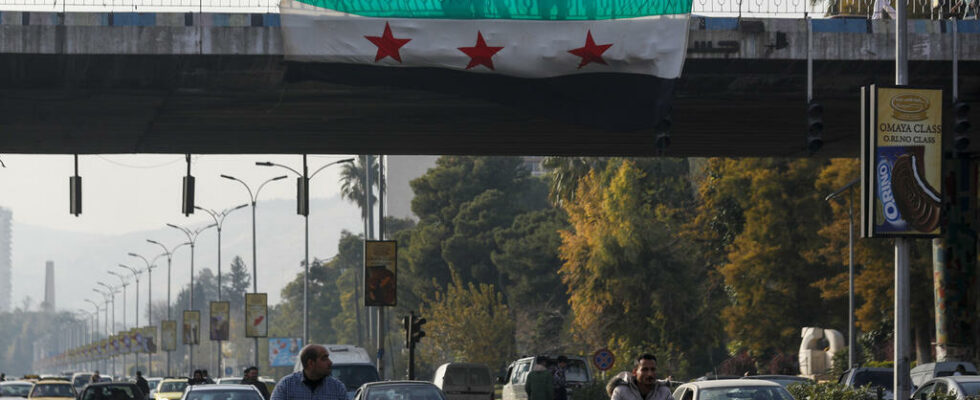The fall of the Bashar al-Assad regime is a regional earthquake, particularly for those who had supported it militarily in recent years: Iran, Lebanese Hezbollah and other organizations claiming to belong to the “Axis of Resistance” . The Islamic Republic is seeing its regional network of influence disintegrate.
4 mins
Should we talk about the Axis of Resistance in the present or the past? The question arises to describe this group to which the Syriabefore the fall of Bashar al-Assad. Iran, Lebanese Hezbollah, Houthis of Yemen, Palestinian Hamas, Shiite militias of Iraq… The Axis of Resistance has never been an official organization but rather an alliance of States and armed groups claiming their “resistance” against Israel and the States -United, in the region. The term was coined in response to the phrase “Axis of Evil” used by US President George Bush before his invasion of Iraq in 2003.
This axis of resistance has since mobilized on several occasions. Already in 2011, in Syria, when the Iranian Revolutionary Guards and the Lebanese Hezbollah rushed to the aid of Bashar al-Assad, threatened by the uprising and the rebellion. Then more recently, from October 2023, when the Axis of Resistance claimed responsibility for firing missiles, rockets and drones against Israel, in the name of supporting the Palestinians.
One battle too many
It was one battle too many, one that exhausted and exposed the vulnerability of Iran’s allies. Hezbollah has been shattered by Israeli attacks in recent months in Lebanonwhile Iranian forces were hit hard by Israeli bombing in Syria. We know what happened next: the collapse of the regime in a few days, due to a lack of defenders, neither Russian soldiers nor pro-Iran Axis fighters.
A military defeat for Iran and its allies, but also a strategic fiasco. Syria (via Iraqi territory) had become the land corridor of Iranian influence, all the way to the Mediterranean, to the borders of Israel. A route allowing Iran to transport weapons and men to Syria or Lebanon and which, in the other direction, allowed Lebanese Hezbollah to circulate freely in other theaters of operations.
It must also be seen as an ideological failure. The “united front” of Iran’s allies is in pieces. So much so that Palestinian Hamas congratulates the Syrians on the fall of Bashar al-Assad. Spectacular turnaround of the Palestinian Islamist movement which launched the October 7 attacks in Israel, arousing the armed support the next day from Hezbollah, the Yemeni Houthis and the Shiite militias of Iraq.
The temptation of the “coup de grace”
What consequences can Iran draw from this dislocation of its network of influence in the region? Among the scenarios, one which would see a weakened Iran accelerate its nuclear program. “a way to scare the West by playing on the idea of rapid militarization of the Iranian nuclear program”, analyzes researcher and Iran specialist Clément Therme.
Is the weakening of Iran’s regional influence necessarily a factor of stability in the region? It is likely that Saudi Arabia discreetly welcomes the troubles of its Iranian rival, “but the Arab powers of the Gulf want above all stability and the maintenance of a regional dialogue with Iran, to avoid a military escalation” continues Clément Therme.
It remains to be seen how the Israeli and American hawks will behave in the coming weeks. “In Israel, there can be the temptation of the ‘coup de grace’, believes Clément Therme, if it is not the coup de grace finishing off the Islamic Republic, it would be the one that would stop its nuclear program.”
The face of Qassem Soleimani
During his first term, Donald Trump was the “maximum pressure” president on Iran and its allies. Back at the White House, he will face an isolated Islamic Republic, because it is deprived of its “Axis of Resistance”.
On the roads of Lebanon in recent days, new portraits have appeared: that of the leader of Hezbollah Hassan Nasrallah rubs shoulders with the faces of Hamas leaders, Ismael Hanyeh And Yahya Sinwarall have been killed by Israel in recent months. “Martyrs” of the Axis of resistance, they are often represented alongside Qassem Soleimanigeneral of the Iranian Revolutionary Guards, emblematic figure of the unification of the forces of the Axis of resistance. The officer built his legend on the regional fronts where Iran has expanded its military presence in recent years, starting with Syria. Qassem Soleimani was killed by an American strike in Baghdad in January 2020. Five years later, his military legacy is dying.
Also listenSyria faces an uncertain destiny after the fall of the Assad dictatorship
